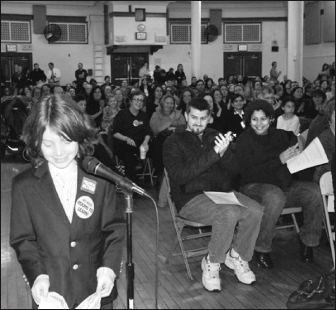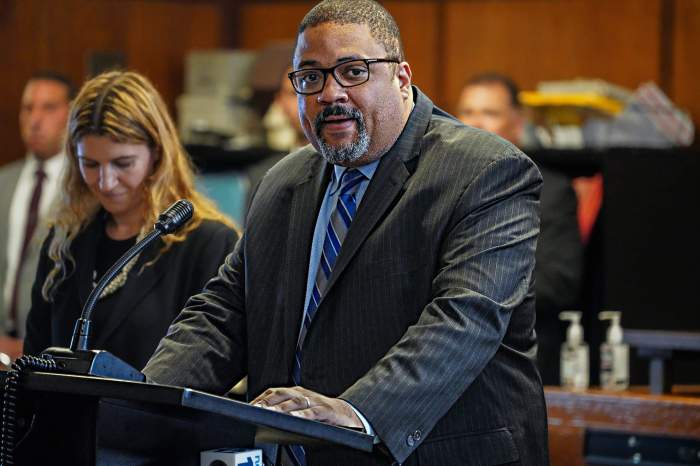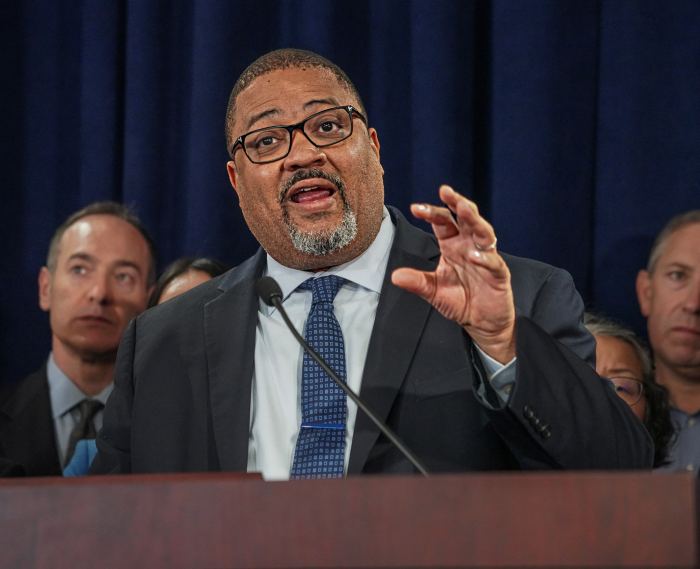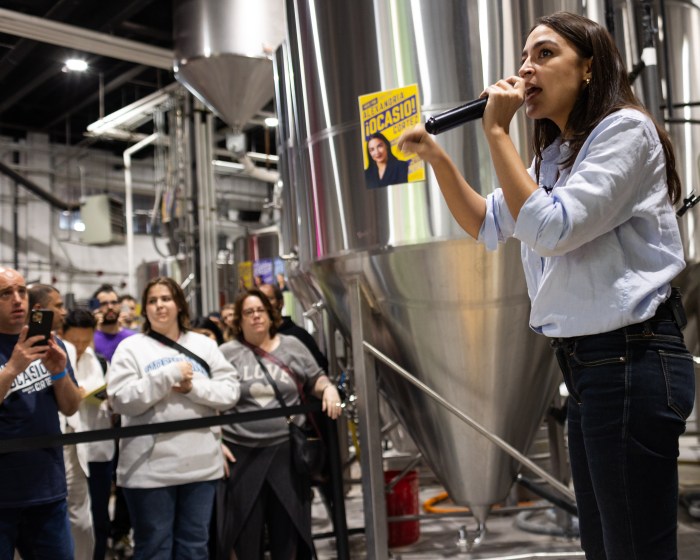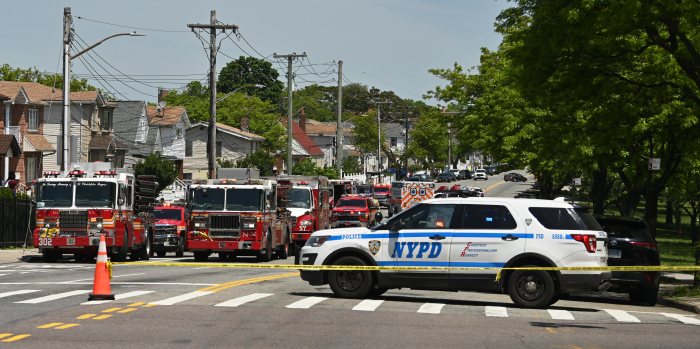By Albert Amateau
Parents from Village elementary and middle schools and local elected officials are demanding that the city Department of Education create new schools for elementary, middle and high school grades in the Village, where existing schools are severely overcrowded.
The call for the new schools came at a Jan. 17 forum at P.S. 3 co-sponsored by Community Board 2 and the Public School Political Action Committee, a group organized last year by parents in Village schools.
“I hope this is the beginning of a close collaboration between Community Board 2 and local parents and teachers to fight for new public schools in our district,” said Brad Hoylman, chairperson of Community Board 2, who conducted the Jan. 17 forum.
Assemblymember Deborah Glick and State Senator Tom Duane, along with Councilmember Rosie Mendez of the East Village and representatives of Council Speaker Christine Quinn and Manhattan Borough President Scott Stringer, spoke at the meeting that attracted more than 200 parents and many students from Village elementary and middle schools.
Speakers pointed out that the intense residential development in School District 2 in Manhattan between Chambers and 42nd Sts. has not been figured into projections for school needs over the coming five or six years.
Two of the forum organizers, Ann Kjellberg and Irene Kaufman, P.S. 41 parents and founders of the Public School Action Committee, urged that Pier 40 and the St. Vincent’s redevelopment projects be considered as new school possibilities.
The Department of Education expects 4,696 new children, an increase of 18.5 percent, in District 2 by 2014. But the department capital plan calls for the creation of new school space for only 3,150 new students by 2010, a shortfall of 1,546 seats.
In the Village, P.S. 41 on W. 11th St. is currently at 112 percent capacity; P.S. 3 on Hudson St. is at 102 percent of capacity, and Baruch Middle School, which is on E. 25th St. but in the Village school catchment area, is at 128 percent of capacity. The middle schools on W. 11th and on Hudson Sts. are more than 90 percent of capacity. In Tribeca, P.S. 234 is at 139 percent of capacity and P.S./I.S. 89 is at 107 percent of capacity.
“As residential buildings continue to be approved at sizes that are appalling, something else has to go with them — public schools,” said Glick, getting a round of applause from the audience.
“Excess state and city property must contain school space and it doesn’t matter whether it’s inboard or outboard of the Hudson shoreline — it belongs to the taxpayers,” Glick said, referring to the 14-acre state-owned Pier 40.
Kjellberg, an organizer of the forum, submitted a statement saying, “An obvious possibility for a school is Pier 40.” She noted that two of the three proposals for redeveloping the pier call for 100,000 square feet or more for schools.
However, she added that a Hudson River Park Trust official recently told parents that the park is not just for the neighborhood but also for the entire city and that educational and recreational uses are too narrowly local. Kjellberg said the official, whom she did not name, seemed to favor a commercial use like Cirque de Soleil, “since anyone can buy a ticket.”
Nevertheless, “The pier seems to offer an opportunity for some really imaginative thinking about how to integrate school and community, recreation and nature, in an original way,” Kjellberg said.
The Pier 40 Partnership, a group of well-financed local parents whose proposal for the pier includes public school space, distributed a flier at the forum announcing a Sun., Jan. 27, rally at Pier 40 to promote the Partnership’s proposal to redevelop the pier with parking, recreation and education uses and, at the same time, provide funds to support the entire 5-mile-long riverfront park. The Trust, the agency building the park, is scheduled to decide on the Pier 40 project on Jan. 31.
Kaufman, one of the organizers of the Jan. 17 meeting, submitted a statement citing the St. Vincent’s Hospital/Rudin Organization redevelopment plan, which is expected to bring more than 400 new apartments to the Village on Seventh Ave. between 11th and 12th Sts., less than a block away from P.S. 41.
“The development is across the street from P.S. 41, which is already at 112 percent utilization,” she said. “I’m sure you have seen the canyon of residential towers going up on Sixth Ave. … There are many other projects in the works, from the High Line to Hudson Square. It is unbelievable that so much can be planned without an eye to the true impact these changes have on our neighborhood,” Kaufman said.
“We need to change the culture of development in New York City,” she continued. “New schools should be made part of the St. Vincent’s development and every other development that adds children to an overcrowded catchment.”
Michael Mirisola, a staff member of the School Construction Authority, the agency that builds and renovates city public schools, told the Jan. 17 forum that he was there to hear what the community had to say. He also acknowledged a personal connection to the Village. Born and raised in the neighborhood, he served on Community Board 2 for several years until about eight years ago.
Robert Jackson, city councilmember from Northern Manhattan and a plaintiff in the Campaign for Fiscal Equity lawsuit that won New York City a more equitable distribution of state education funds, lauded the forum’s organizers.
“You’re fighting for the future of your children,” he said. Jackson noted that the School Construction Authority did not achieve the goals it set in its previous five-year capital plan and added, “At the rate they’re going they won’t meet their projections for the next plan.”
Not all the speakers at the forum were parents or officials. Students from P.S. 3 and P.S. 41 also spoke about overcrowding in their classrooms.



